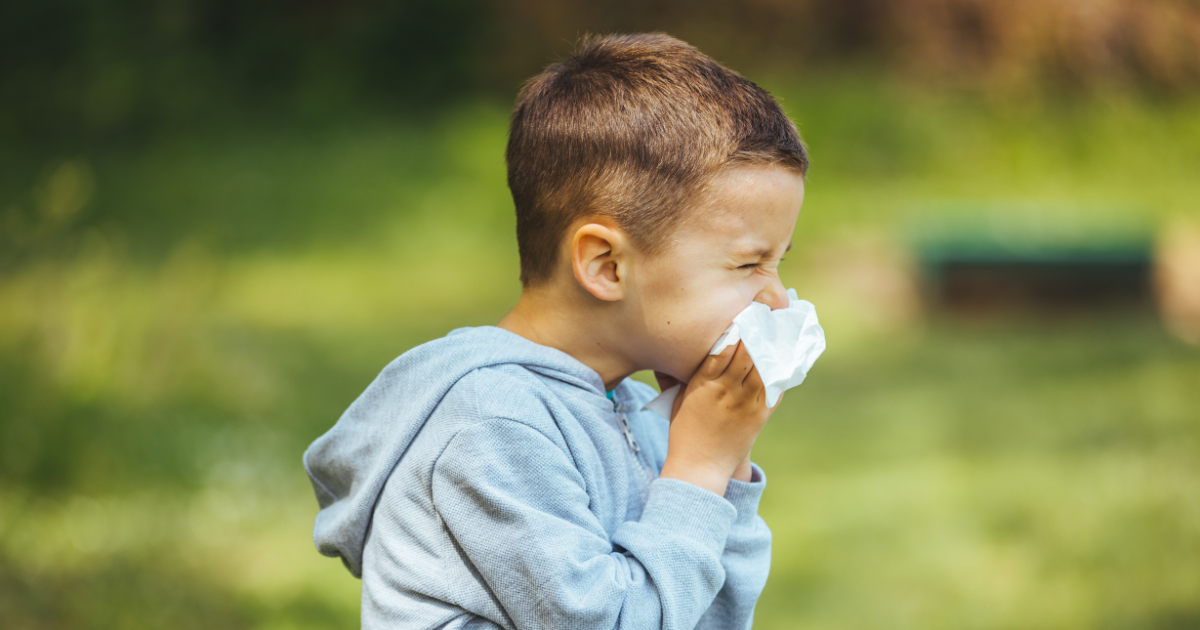Summary
Many children with neuroimmune or neuroinflammatory conditions face more than just seasonal allergy symptoms. Histamine overload can play a hidden role in brain symptoms like focus issues, irritability, brain fog, and sleep disruption. Histamine is normally helpful in immune function and brain signalling, but when it builds up it can trigger wider effects across body and brain.
When histamine builds up beyond what the body can clear, it may affect the nervous system, gut, skin, and brain. This means children might experience digestive troubles, rashes, headaches, mood shifts, or learning and attention difficulties. Studies show that histamine affects neurodevelopment, brain-immune interactions and cognitive functioning.
For parents, the take-away is this: recognising histamine overload means looking beyond typical allergy symptoms and considering diet, gut health, enzyme support and environmental triggers. By managing histamine load, you can support calmer moods, clearer focus and more settled sleep in your child.
If your child struggles with mood swings, sleep issues, or focus problems during allergy season, explore our Spring Allergy Relief Bundle. It’s designed to help manage histamine naturally, calm inflammation, and support brain and immune balance. You can also download our Low Histamine Guide for easy, practical steps to get started today.
FAQS
Q1. What is histamine overload? Histamine overload happens when the body makes or consumes more histamine than it can break down. This buildup can cause allergy-like symptoms, inflammation, and brain-related effects such as mood swings or sleep problems.
Q2. How does histamine affect a child’s brain? Histamine acts as a chemical messenger that influences mood, focus, and energy. When levels rise too high, it can overstimulate the brain, leading to irritability, anxiety, and trouble concentrating.
Q3. What are common signs of histamine overload in children? Symptoms may include brain fog, fatigue, irritability, anxiety, congestion, sneezing, headaches, digestive upset, or flushing. These symptoms can often worsen during allergy season.
Q4. Why are children with neuroinflammatory conditions more sensitive to histamine? Children with conditions such as PANS, PANDAS, ADHD, autism, or chronic infections may have higher inflammation and lower enzyme activity for breaking down histamine. This makes them more reactive to seasonal and food-based histamine triggers.
Q5. How can parents reduce histamine naturally? Parents can try a low-histamine diet, support gut health with probiotics and fiber, and use supplements such as DAO, vitamin C, and quercetin under professional guidance. Improving air quality, hydration, and sleep can also help.
Q6. When should families seek professional support? If a child experiences ongoing mood changes, fatigue, or brain fog that worsens during allergy season, it may be time to consult a practitioner who understands histamine metabolism and neuroimmune health. A professional can help find the root cause and build a personalized plan for relief.
Introduction
You’ve done everything “right.” You’ve adjusted their diet. You’ve cleaned up their environment. You’ve followed the protocols.
And still, your child is struggling.
Spring rolls around, and suddenly they’re not sleeping well. They’re more reactive, more anxious. They’re having more digestive issues. And no matter how carefully you’ve been managing things, something just feels… off.
This is a pattern I see every year with many of the families I work with. And one of the most common culprits is something many people aren’t even aware of: histamine overload.
What Is Histamine Overload?
Histamine is a normal part of the immune system. It helps the body respond to injury or infection, enhances cognitive function, supports digestion, and even plays a role in regulating the sleep/wake cycle. But when there’s too much histamine, or when your child can’t break it down effectively, it begins to affect systems far beyond the immune response.
In a well-functioning body, histamine is tightly regulated. However, when regulation breaks down, the histamine overload symptoms can snowball, creating a feedback loop of reactivity that becomes harder and harder to manage without intervention.
For some people, the body makes too much histamine. Exposure to biotoxins like mold or spike proteins and infections can disrupt normal gut function, causing excessive histamine production.
Sometimes the body has trouble breaking down histamine, often because levels of DAO (the enzyme responsible for clearing histamine from the gut) are too low. Issues like leaky gut or IBS, certain medications, or even eating too many histamine-rich foods can lower DAO levels. Then histamine builds up faster than it can be cleared, leading to a wide range of histamine overload symptoms.
It’s important to note that children are especially vulnerable to these imbalances, as their systems are still developing and may not yet be equipped to handle large histamine loads, especially during periods of high exposure like allergy season.
Outside the gut, the body relies on an enzyme called HNMT (Histamine-N-Methyltransferase) to break down histamine. Specifically, HNMT degrades histamine within the central nervous system. When HNMT activity is reduced or absent, histamine accumulates in the brain, leading to elevated levels that can disrupt normal physiological functions. In studies with HNMT-deficient mice, this accumulation resulted in increased aggression and disturbances in the sleep-wake cycle.
This central nervous system connection is often overlooked, but it plays a critical role in how children experience and express symptoms. What might be labeled as “behavioral issues” or “sensory sensitivity” could, in fact, be the body’s response to unprocessed histamine in the brain.
But histamine overload isn’t just about enzymes and digestion. It’s also deeply connected to the brain’s stress responses.
How Trauma Affects Histamine Overload Symptoms
Emotional stress isn’t just about feelings. It has a measurable impact on the body. When the brain perceives a threat, the limbic system (specifically the amygdala) activates the fight-or-flight response. This response increases the release of histamine, along with other stress-related chemicals.
This isn’t just theoretical. Many families have witnessed firsthand how emotional or environmental stress can trigger sudden regressions or flare-ups in symptoms that seemed under control.
For children with a history of trauma, this system can become imprinted, keeping the brain in a state of high alert. That means even minor stressors can trigger a surge in histamine, leading to symptoms like panic, a racing heart, or intense anxiety. Over time, this constant activation can contribute to histamine overload especially when combined with other histamine sources from food or the environment.
This becomes a vicious cycle: stress increases histamine, and high histamine increases stress sensitivity. Left unchecked, this cycle can deeply impact quality of life — not only for the child, but for the whole family.
Common Histamine Overload Symptoms
Because histamine affects multiple systems in the body, histamine overload symptoms can vary widely from child to child. Here are some of the most common ones I see in practice:
🧠 Neurological & Mood Symptoms
Migraines
Fatigue
Anxiety, panic, heart palpitations
Brain fog
Sleep disturbances
Dizziness
Sensitive to everything, including light, smells, sounds, food, supplements, etc.
Difficulty regulating body temperature
If your child is experiencing any of these neurological symptoms, I suggest reading this blog, Spring Allergies and Brain Fog: What the Research says, to learn more about how histamine effects the brain and how you can deal with the symptoms.
🌬 Respiratory Symptoms
Nasal congestion, sneezing
Difficulty breathing
Asthma
Reactive airway disease
In some cases, respiratory symptoms mimic seasonal allergies so closely that histamine overload is misdiagnosed or overlooked entirely.
🍽 Digestive Issues
Nausea, vomiting after eating
Abdominal pain
Bloating
SIBO/SIFO
Food intolerances
Constipation, diarrhea
It’s not uncommon for children to experience digestive discomfort so consistently that it becomes their “normal.” But normal doesn’t mean optimal — and it doesn’t mean they need to keep suffering.
🌿 Skin Reactions
Flushing
Hives
Rashes when eating
Dermographia (raised red marks appear where the skin is lightly scratched)
Swelling (lips, throat)
Raised welts or bright red skin
Itchiness
These skin reactions can be alarming, especially when they appear suddenly or worsen without an obvious cause. Understanding the histamine connection helps families take targeted action instead of chasing isolated symptoms.
If your child is experiencing several of these symptoms, especially if they worsen in the spring or after eating, you may be dealing with histamine overload.
Need Support with Symptom Relief?
If your child is dealing with any of the histamine overload symptoms above, it’s worth exploring whether histamine overload might be contributing.
I’ve created a Spring Allergy Relief Bundle that includes practitioner-grade supplements to help reduce histamine levels, support immune balance, and calm nervous system reactivity.
I’ve also created a Low Histamine Guide to help families navigate histamine intolerance. Get your free copy here.
P.S. Histamine overload can show up in ways many parents don’t expect, from mood swings and sleep issues to skin rashes and digestive troubles.
If your child is dealing with histamine overload symptoms like these, the Spring Allergy Relief Bundle includes some of the practitioner-grade tools I use in practice to help bring histamine levels back into balance.







